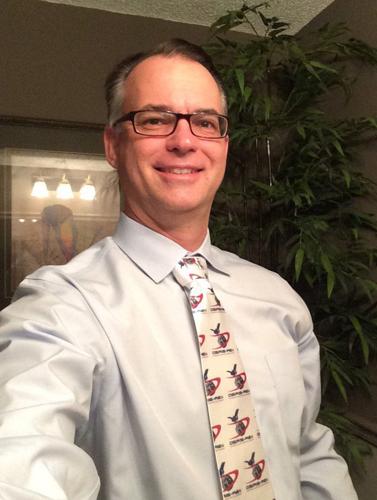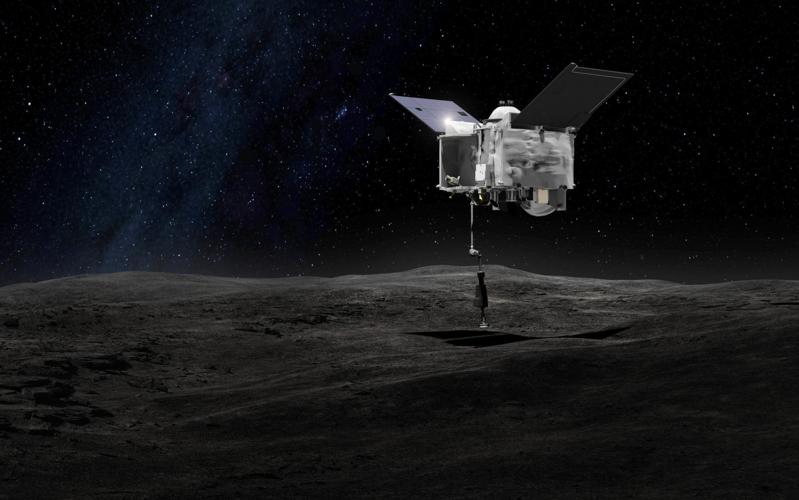When NASA’s only major concerns for the OSIRIS-REx launch on Thursday are some fluffy white clouds, you know the mission is in good shape.
The mission, led by the University of Arizona’s Lunar and Planetary Laboratory, is scheduled to blast off at 4:05 p.m. Tucson time Thursday from Cape Canaveral, Florida.
After two years and more than 2 billion miles, OSIRIS-REx will rendezvous with asteroid Bennu, survey it, collect a sample, and send those space pebbles back to Earth.
Wind and rain shouldn’t interfere with the launch, said weather officer Clay Finn during a televised pre-launch briefing Tuesday. There is a slight chance of cumulus clouds affecting visibility, Flinn said.
OSIRIS-REx has a 115-minute launch window Thursday. Friday and Saturday are viable backup dates.
Principal investigator Dante Lauretta said he isn’t worried.
“I’m absolutely not nervous because we have a phenomenal team and they know what they’re doing,” said Lauretta, who sported an OSIRIS-REx tie during the briefing.
Lauretta is a professor of planetary science at the UA, which is home to the mission’s Science Processing and Operations Center.
He said he is a bit anxious, but only because he’s been working on the OSIRIS-REx mission for 12 years and he wants the opportunity to fly the spacecraft.
The $1 billion mission is a first for NASA — to return a sample of an asteroid to Earth.
Its target is Bennu, a near-Earth asteroid that scientists think is rich with ancient carbon. “Bennu is a time capsule from the earliest stages of solar system formation,” Lauretta said.
Scientists think the organic molecules that potentially exist on Bennu may hint at how life originated on Earth.
The mission will collect a sample about four years after launch. Before that, OSIRIS-REx must make a long journey through space.
It will spend a year in solar orbit before using the Earth’s gravity to propel itself toward Bennu. Once the craft reaches the asteroid, the suite of instruments on board will collect data and map out the space rock for a year and a half.
Then OSIRIS-REx will move in for the sample.
A specialized collection device on the end of a 10-foot robotic arm will give Bennu a brief “high five.” The device will release gas when it makes contact, propelling asteroid rocks and dust up into the collection chamber.
The sample will then be safely stowed, and the spacecraft will park itself nearby, awaiting the right time to head toward Earth.
Only the sample will touch down on terra firma. The main spacecraft will jettison the return capsule, which will gently parachute down to Utah after a speedy entrance into Earth’s atmosphere.
The mission is on-time and under-budget. It is unfazed and unaffected by the recent, nearby explosion of a SpaceX Falcon 9 rocket, said Lauretta.
“I am very confident that we’ve managed the risks and that we understand them and that this mission is going to succeed,” he said.
The SpaceX rocket, which burst into a fiery inferno on the launch pad next to OSIRIS-REx, was a stark reminder of the risks of the business, he said.
“It made us take a look again at everything we’ve done,” he said.
“The teams did an extensive walk-down of the pad area,” said Scott Messer, the program manager for NASA missions at United Launch Alliance. “Our Atlas V vehicle, as well as OSIRIS-REx, are safely buttoned up and secure.”
The mission’s original principal investigator, Mike Drake, died in 2011. Lauretta took a moment to remember him during the briefing.
“He was my friend, my mentor, and the visionary who brought me on to the program in 2004,” Lauretta said.
“I know he’s still with us. He’s in our hearts and our souls and he’s looking down on us today. He’d be proud, and he’d be having the time of his life.”
With all the seriousness surrounding the mission, Lauretta still has a childlike wonder when he thinks about what he and the team will be accomplishing.
“Sometimes I have to pinch myself to convince myself that I’m not dreaming this and it’s actually happening, and I’m leading this mission,” Lauretta said.





